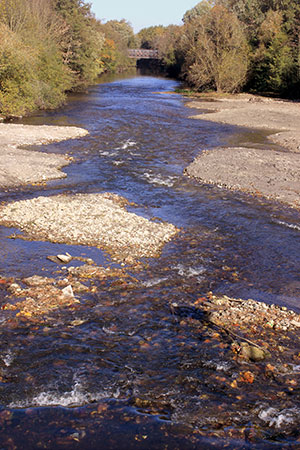CDBG - Disaster Recovery
CDBG-DR Background
The Community Development Block Grant – Disaster Recovery (CDBG-DR) program was established to help states recover from Presidentially declared disasters, particularly in low-income areas. Congress may appropriate additional funding for CDBG titled “Disaster Recovery” grants to rebuild the affected areas and provide necessary funding to start the recovery process.
HUD does not provide CDBG-DR funding directly to individuals or organizations. If you are interested in participating in this program, you need to contact your local municipal or county officials to find out how the program operates in your area.
The programs funded through the CDBG-DR award will address the State’s unmet housing, infrastructure, planning, and economic development needs as allowable under the program requirements.
Program activities will support recovery efforts in the 12 Presidentially declared disaster-impacted counties, with most of the funds going to the HUD-determined most impacted and distressed counties: Kanawha, Greenbrier, Nicholas, and Clay. The grant requires that 80% funds benefit low- and moderate-income persons.
Eligible Applicants/Grantees for CDBG-DR Grants
CDBG-DR grants primarily benefit low-income residents in communities that have experienced a natural disaster. Grantees must use at least half of the funds for activities that benefit low- and moderate-income people. Grantees may use CDBG-DR funding for recovery efforts involving housing, economic development, infrastructure, and prevention of future damage to the affected areas. These funds can not duplicate funding from another agency (i.e. The Federal Emergency Management Agency).
Eligible governments must develop and submit an Action Plan for Disaster Recovery before receiving CDBG-DR grants. The Action Plan must describe the needs, strategies, and projected uses of the Disaster Recovery funds. Disaster recovery waivers may include a streamlined citizen participation process relative to Action Plans and removing these plans from the grantee’s regular Consolidated Plan needs assessments.
Funding for CDBG-DR Grants
Amount:
- FY 2017 Very Low-Income (50%) Limit (VLIL); Median family income – $54,100
- HUD created a median family income of $57,439 for the area, using the underlying 2013 ACS Data. HUD's special tabulations of 2014 ACS data, which will be used to calculate the FY 2017 Median Family Income estimate, reflects the geography definition changes.
Source of Funds: HUD
Funding Cycle: N/A
Authorization of Legislation/Statue: Public Law 114-245

